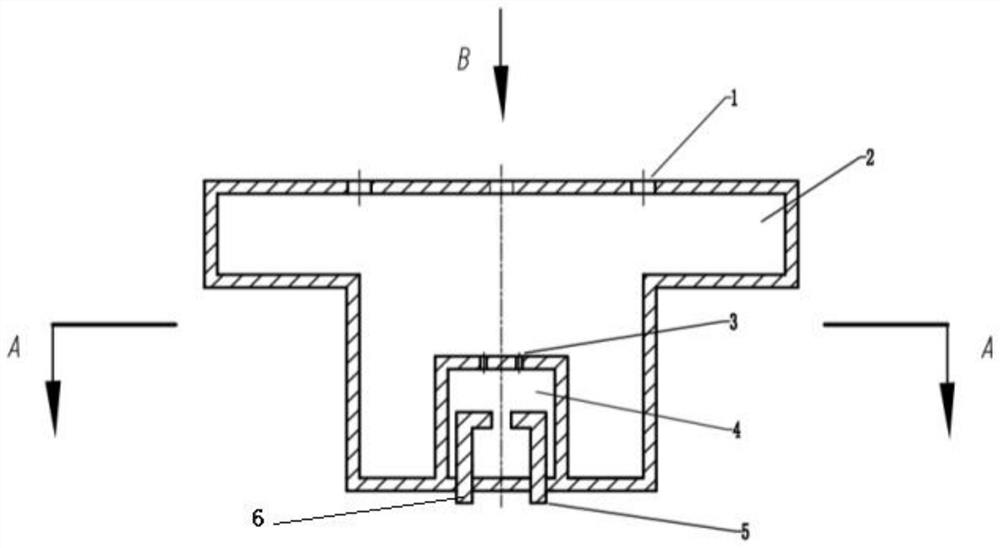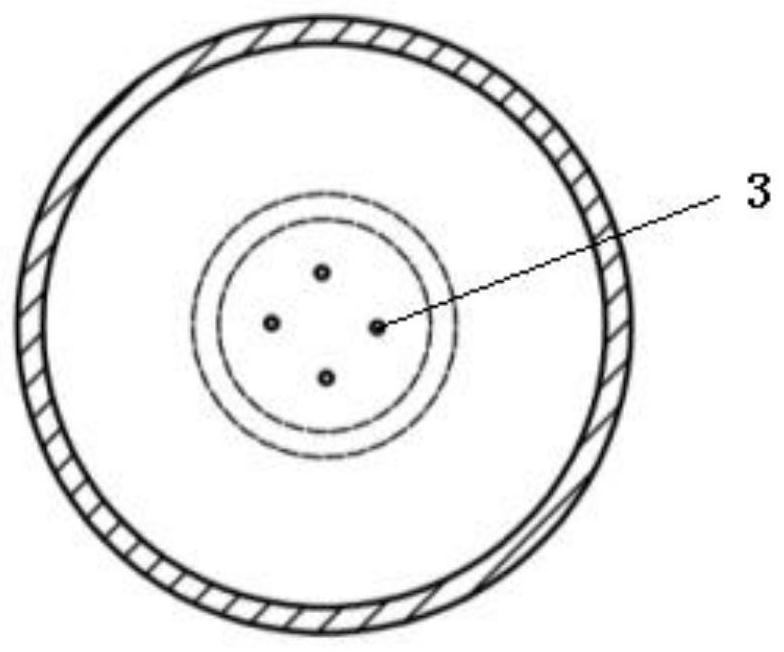Plasma Synthetic Jet Actuator at Low Reynolds Number
A plasma, low Reynolds number technology, applied in the direction of plasma, affecting the air flow through the surface of the aircraft, electrical components, etc., can solve the problems of high jet velocity, restricting the application of plasma synthetic jet actuators, etc.
- Summary
- Abstract
- Description
- Claims
- Application Information
AI Technical Summary
Problems solved by technology
Method used
Image
Examples
specific Embodiment 1
[0034] according to figure 1 As shown, a plasma synthetic jet exciter under low Reynolds number conditions includes exciter discharge chamber 4, exciter buffer chamber 2, cathode discharge electrode 6, anode discharge electrode 5 and heat-resistant silica gel, and exciter discharge chamber 4 is placed In the exciter buffer chamber 2;
[0035] The exciter discharge chamber 4 is a hollow cylinder, the exciter buffer chamber 2 is a hollow cylinder or a hollow cylinder with a polygonal geometric section in cross section, and an array distribution is arranged on the partition plate between the exciter discharge chamber 4 and the exciter buffer chamber 2 The high-speed jet hole 3, the upper wall of the exciter buffer cavity 2 is provided with a low-speed jet hole 1 or a slot opening.
[0036] The body wall of the discharge chamber 4 of the exciter and the heat-resistant silica gel are both insulating materials. The discharge electrode is connected to the discharge chamber 4 of the ...
specific Embodiment 2
[0040] according to figure 2 As shown, the working principle of the low Reynolds number plasma synthetic jet actuator is: the gas in the discharge chamber is heated under the discharge action of the cathode discharge electrode 6 and the anode discharge electrode 5, so that the gas in the discharge chamber becomes a high-pressure state, and the high-speed gas From the high-speed jet hole 3 to the actuator buffer cavity 2, the high-speed gas is decelerated in the actuator buffer cavity 2 to become a low-speed gas, and then the gas is injected from the low-speed jet hole 1, the shape and size of the actuator buffer cavity 2 and the internal guide The structure and the shape and size of the low-velocity jet hole 1 determine the gas velocity of the jet to the outside, and the air flow to the outside exchanges momentum with the outside gas to achieve an active control effect. The exciter buffer chamber 2 can also be a cylinder whose cross section is a polygonal geometric section ex...
PUM
 Login to View More
Login to View More Abstract
Description
Claims
Application Information
 Login to View More
Login to View More - R&D
- Intellectual Property
- Life Sciences
- Materials
- Tech Scout
- Unparalleled Data Quality
- Higher Quality Content
- 60% Fewer Hallucinations
Browse by: Latest US Patents, China's latest patents, Technical Efficacy Thesaurus, Application Domain, Technology Topic, Popular Technical Reports.
© 2025 PatSnap. All rights reserved.Legal|Privacy policy|Modern Slavery Act Transparency Statement|Sitemap|About US| Contact US: help@patsnap.com



